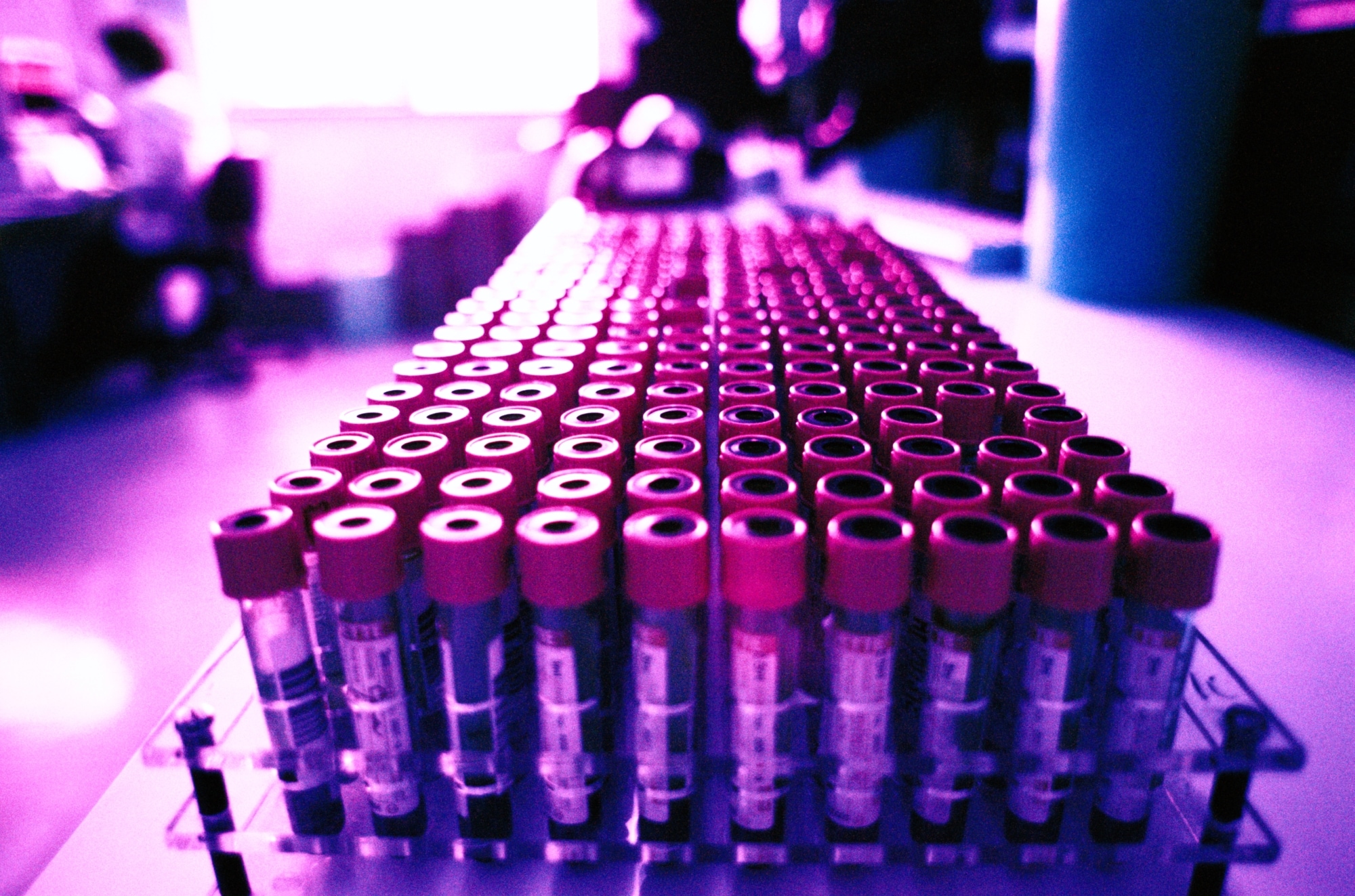At a glance
- The National Exposure Report summarizes biomonitoring measurements made using samples from participants in NHANES.
- Blood, serum, and urine samples are analyzed for environmental chemicals.
- NHANES is a nationally representative survey that assesses health and nutritional status.

Blood, serum, and urine samples from NHANES
Biomonitoring measurements for CDC's National Report on Human Exposure to Environmental Chemicals (Report) are made using samples from participants in the National Health and Nutrition Examination Survey (NHANES), conducted by CDC's National Center for Health Statistics (NCHS). NHANES is designed to collect data on the health and nutritional status of the U.S. population. NHANES collects information about a wide range of health-related behaviors, performs physical examinations, and collects clinical samples for laboratory tests. Beginning in 1999, NHANES became a continuous survey, sampling the U.S. population annually and releasing the data in 2-year cycles. The sampling plan follows a complex, stratified, multistage, probability-cluster design to select a representative sample of the civilian, noninstitutionalized population in the United States based on age, gender, and race/ethnicity.
The NHANES protocol includes a home interview, followed by a standardized physical examination in a mobile examination center. As part of the examination, blood is obtained by venipuncture from participants aged 1 year and older, and urine specimens are collected from participants aged 6 years and older. Starting with the 2015–2016 survey, urine specimens were collected from children ages 3–5 years. Additional detailed information on the design and conduct of the NHANES survey is available at NHANES.
CDC measures environmental chemicals in blood, serum, or urine collected from participants. Most of the environmental chemicals are measured in randomly selected subsamples within specific age groups. Randomization of subsample selection is built into the NHANES design before sample collection begins. Different random subsamples include different participants. Subsampling is needed to ensure an adequate quantity of sample for analysis and the mass spectrometry analytical methods.
- Data tables in the Report specify age groups and sample sizes for each exposure measurement.
- Blood measurements in children younger than 12 years are limited by the amount of blood that can be collected.
- Blood metals are measured in participants aged 1 year and older.
- Beginning in 2011, the blood mercury species methyl mercury and ethyl mercury were added.
- Most measurements of chemicals in serum are made in samples from participants ages 12 years and older.
- Urine was collected from participants ages 6 years and older until 2015, when it became possible to collect urine from children as young as 3 years.
- Most urine chemicals are measured in a representative one-third subsample, but a full sample is used for participants ages 3–5 years.
If a particular chemical or an entire chemical group has no detectable results for three survey periods, it is usually not measured in subsequent survey periods. Some examples include:
- The sulfonyl urea herbicide group was measured in NHANES 2003–2004, 2005–2006, and 2007–2008 with no detections, even at the 95th percentile, so this group is no longer measured in the ongoing survey.
- Mono-n-octyl phthalate (MOP), a phthalate urinary metabolite, was not detected above the 95th percentile for more than three survey cycles, so it was no longer reported after 2010.
- Several banned organophosphate and organochlorine pesticides have become largely undetectable and are no longer measured.
- Some chemicals are widely detected but have had unchanging levels in the population (e.g., phytoestrogens) and are no longer measured.
By discontinuing measurements of chemicals that are rarely or not detected, and well-characterized chemicals for which the source of exposure is consistent, CDC's Division of Laboratory Sciences can better focus its resources on assessing exposure to chemicals of highest priority. In addition to performing measurements on NHANES samples, these efforts include developing new and improving existing biomonitoring methods for chemicals of concern.
Beginning with NHANES 2005–2006, CDC used a weighted pooled-sample design to measure serum concentrations of dioxins, furans, polychlorinated biphenyls (PCBs), organochlorine pesticides and metabolites, and brominated flame retardants (polybrominated diphenyl ethers and polybrominated biphenyl [PBB] 153). Pooled samples are used when larger sample volumes are needed to improve the sensitivity of the measurements and to reduce the number of samples being analyzed, balancing the cost of the analysis against a low frequency of detectable results.
The following considerations guided the selection of chemicals in the Report:
- Scientific data suggested exposure in the U.S. population.
- Health effects known or suspected to result from some levels of exposure were serious enough to cause concern.
- Data were needed to assess the effectiveness of public health actions to reduce exposure to a chemical.
- Biomonitoring analytical methods could provide results with adequate accuracy, precision, sensitivity, specificity, and throughput.
- Adequate blood or urine samples were available.
- Incremental analytical costs to perform the biomonitoring analysis for the chemical were reasonable.
The availability of biomonitoring methods with adequate performance and acceptable cost was a major consideration. Details on the prioritization process for scoring nominated chemicals and the resulting scores are available at About the Chemicals.
